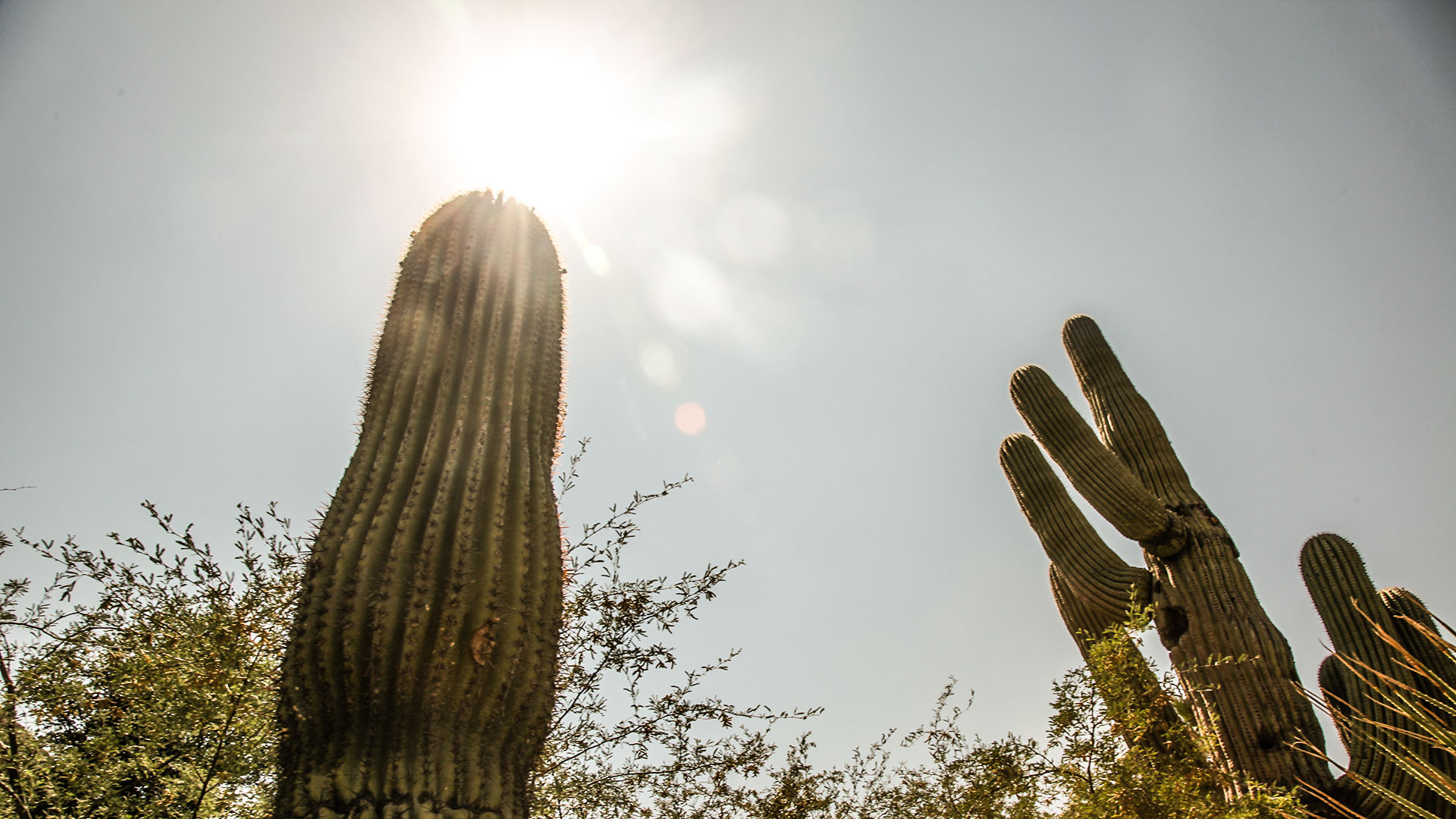 Saguaro cactus amid mid-afternoon sun.
Saguaro cactus amid mid-afternoon sun.
The Buzz for June 14, 2024

Summer has set in across Southern Arizona, and excessive heat watches and warnings are growing more frequent.
The Tucson area is headed into a weekend with those warnings in effect, leading to messages about avoiding extreme temperatures and the health risks they create by staying out of the sun.
"Typically, once you're into the 105s and 110s, you want to be done being outside by around 10:00 am," said Dalton Van Stratten, a meteorologist with the National Weather Service office in Tucson. "I'd say 6:00 pm is when it start to cool off a bit, or at least the direct sunlight isn't as much of a problem."
Van Stratten said that during such heat waves, precautions such as staying hydrated, using sunscreen and wearing protective clothing is important.
"Also, know the signs of heat exhaustion and heat stroke. Having those symptoms, then it's a medical emergency, and heat-related illnesses tend to really be an issue this time of year," he said.
But for those who cannot easily avoid heat, following such precautions can be difficult. Governmental agencies and non-profits often open cooling centers during such waves to ease that difficulty.
Crossroads Mission runs two such centers in Yuma, one within its thrift store and another at a shelter it operates.
They offer areas meant to help people avoid the heat for time spanning from short respites to multi-day stays.
"They get to stay here for 20 days and we really try and watch the temperatures. Because we’re going to let you go out when the temperatures are supposed to be hitting this week of 102-111," said Mission Community Affairs Director Barbara Rochester. "So we try and do a whole package deal so we don’t say ‘okay, your times up you can leave’.”
Those longer stays also include other assistance geared toward helping people, particularly those experiencing homelessness, though services are not limited to just such individuals.
"We offer free GED classes here. It's an encouragement for them to be here, then we can find out why you're homeless, what's going on in your life. I have counselors here to see if there's anything we can do to get you off the street for being homeless. Do you need to go to the doctor? I have bus passes. If you don't have an ID, we provide IDs for you free. We provide as much as we possibly can."
Beyond those, Rochester said they offer free meals, laundry and care for pets–though animals are not allowed in the shelter for insurance reasons.
"They love root beer floats. Cold Stone Creamery donates ice cream periodically. So we get those cans of rootbeer and give them a big 16 ounce ice cream and they just pour that root beer, and that's heaven on Earth."
For those who have homes but lack the ability to make needed repairs to keep them efficiently cooled, a government program to Yuma's east offer help.
The Pima County Home Repair Assistance Program offers assistance with home repairs that range from shaded window screens to new roofs for those of low-to-moderate income. Program staff often see a rush as the hot weather arrives and people's air conditioners begin to have issues.
"Unfortunately, these things often happen too late. They're calling when they've already had problems with the AC or it's gone out," said Pima County's Joel Viers. "A lot of people are really stuck because they don't have the resources to deal with a failed major component or increasing energy bills. And they're only set to go higher of course, this is going to be increasing year to year."
Viers said the process can be slow-moving, with some projects taking up to 14 months from application to completion.
"Unfortunately, our program is simply not nimble enough. And our grant funders don't allow sort of the flexibility yet. If it is really a health safety issue, then we can move them up as we need to and put off other less less critical needs," he said.
But for pressing matters relating to air conditioning, they do have temporary options, thanks to donations from Tucson Electric Power and Trico Electric Coop.
“One of the great things about our program is we do have some portable A.C. units that we can lend out to the residents until we can get their application completed, get them in the program and get our contractors out there. So we do have a little bit of a remedy to help them out,” said Tony Reis, Pima County Housing Rehab Specialist Supervisor.
Reis and Viers say those loner units are available to a wider group than their normal services, allowing people a grace period while they await repairs.
Reis said an important step anyone should take is ensuring your home has some of the most cost-effective steps to becoming energy efficient.
"When we go into a home, we do our initial inspection, we'll check the insulation in the attic, make sure it's adequate, weather stripping, we do sunscreens to help prevent the sunlight coming directly through the windows, just minor things like that will definitely increase their their cooling capacity and reduce their bills."




By submitting your comments, you hereby give AZPM the right to post your comments and potentially use them in any other form of media operated by this institution.